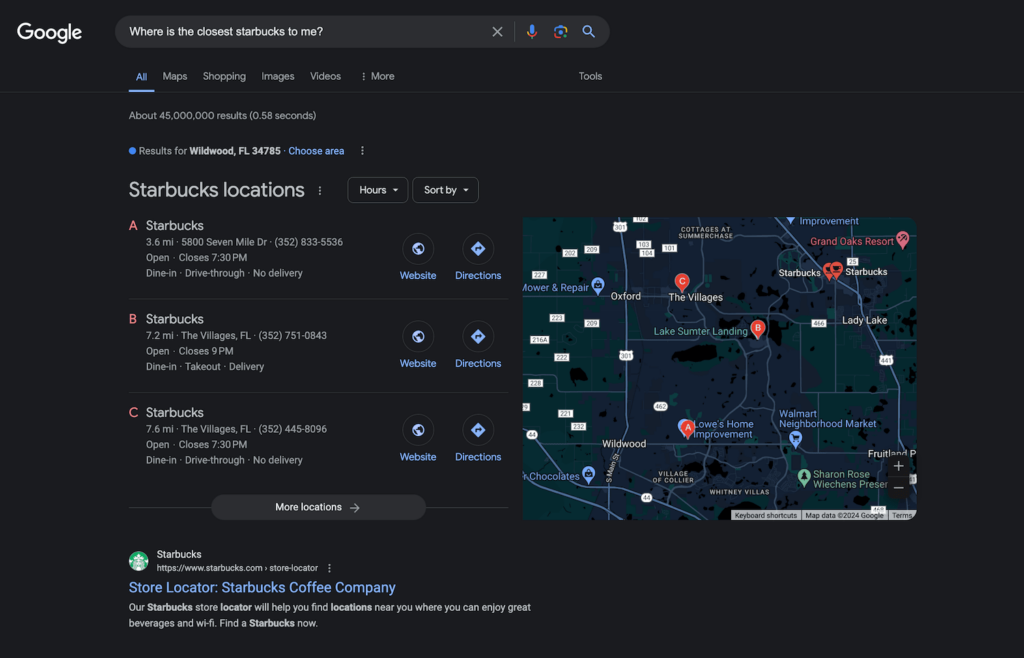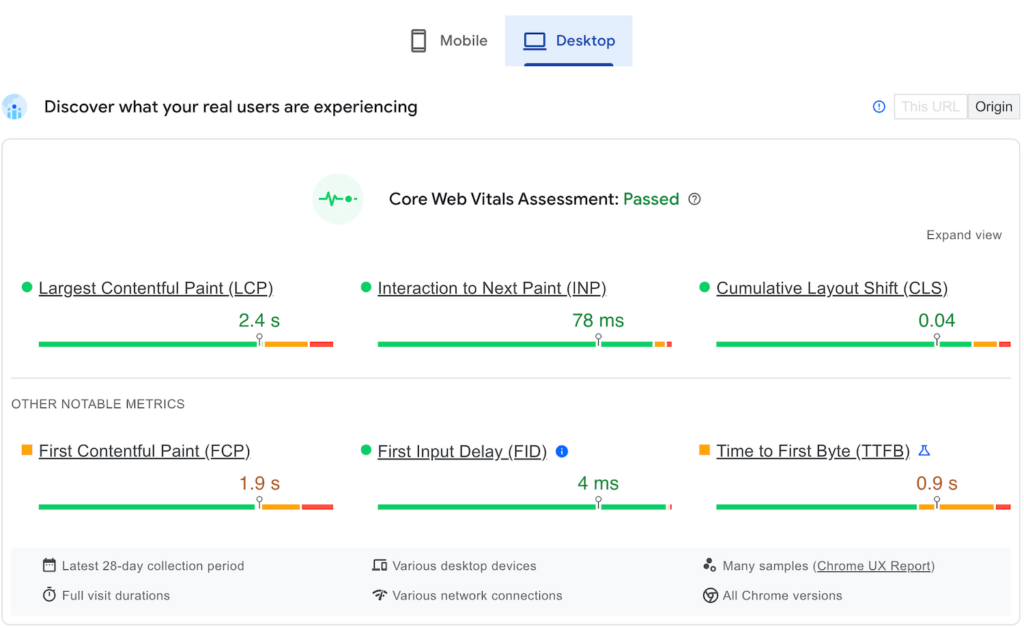Voice search is quickly becoming dominant in how we interact with the internet, guiding the gradual shift into a new digital era. Search queries are being asked – and answered – more conversationally, saving the user time. For local businesses, voice search is a unique opportunity to connect with their audience more naturally and immediately.
On the other hand, it also presents a challenge – staying on top of local SEO as search engines and user habits evolve. In this post, we’ll look deeper into voice search, its impact on local SEO, and strategies to help you adapt and thrive online.
What is Voice Search?
To explain a bit further, voice search lets users perform searches on the internet by verbally asking a question on a smartphone, tablet, or voice assistant device. Voice search understands natural language, making it easier for users to find information, products, or businesses using everyday speech.
So, in addition to changing how queries are performed, it’s also revolutionizing search engine results. That’s what makes it essential for local businesses to adapt their SEO strategies accordingly.
This way of searching is becoming more popular because it’s fast, hands-free, and allows users to multitask. According to a survey in late 2015 by Mindmeld, most voice command users had just started taking advantage within the previous 6 months. Imagine how many more folks find their searching voice every day!
In fact, a 2022 study by NPR and Edison Research found that 62% of American adults use voice commands on one or more devices – of those, 57% are daily voice command users.

Voice Search and Local SEO
Voice search is becoming a big deal for everyone who uses the internet. Let’s break down the notable impacts of this search function on local SEO.
- Conversational Content – When people use voice search, they generally frame questions like talking to another person. This means a business must think about what questions their customers might ask out loud. From there, they should provide clear answers on their websites or social media.
- Nearby Searches – A lot of times, voice searchers are looking for services or shops close to them. Emphasizing local content and keywords on your website ensures your business is prominently visible where and when your audience is searching.
- Mobile and Local Listings – A mobile-friendly site is essential since voice searches predominantly come from mobile devices. Also, voice search devices frequently pull information from local business listings. Consequently, it’s super important to ensure your Google Business Profile and other listings are up-to-date.
- User Experience (UX) – At the end of the day, it’s not just about showing up in searches. When someone clicks on your website, you want to ensure they can find what they need quickly and easily. This means having an intuitive, easy-to-navigate website, even on a small phone screen.
Making Your Site Voice Search Friendly
Optimizing for voice search is about gradually making small, smart changes that have a big impact. Here are the best ways to start adapting to the impacts we discussed above:
Speak the Language
The heart of voice search lies in its conversational nature, with users often seeking local information or quick answers. For instance, a home inspector could optimize their content to answer common customer questions like, “How do you prepare for a home inspection?” or “How do I fix a leaking faucet?”.
Using tools like SEMRush, you can collect relevant keywords and frame them as questions your customers might ask aloud. Then, directly address them in your online content. Since voice searches are much more likely to be local-based than text searches, providing a quick, helpful answer while also being in the customer’s area makes for more conversions.
Highlight Your Location
In the era of “near me” searches, being clear about your location can set you apart. Using natural language that includes local landmarks and points of interest makes it easier to find you, which is always a good thing.
Rather than vaguely stating “located downtown,” specifying “Next to the Central Library on Park St., downtown” helps voice search technologies accurately present your business in search results.
Precisely detailing your location on your website, social media, and Google Business Profile ensures you’re a top contender in local searches.

Search Results with a Quick Answer to a Conversational Local Query
Optimize for Mobile Use
Searches conducted on mobile devices are always increasing and a mobile-friendly website is non-negotiable. This means adopting a responsive design – ensuring text is readable without zooming, making buttons large enough for easy tapping, and other small but impactful tweaks.
Tools like Google’s Mobile-Friendly Test can offer insights into how well your site performs on mobile devices and suggest improvements.
Clear, Direct Answers
Additionally, Google’s voice search algorithm favors websites that provide concise, clear answers. Directly answering potential questions (particularly in an FAQ section) can position your website as a valuable resource.
Implementing Schema Markup helps search engines understand the context of your content, increasing the likelihood of your answers being featured in voice search results.
As an example, clearly stating on your homepage or FAQ section, “Our office is open from 8 AM to 6 PM on weekdays,” can effectively capture relevant voice searches.
Engage Locally on Social Media
Also, while social media engagement might not directly influence search rankings, can significantly impact local visibility and brand perception! Sharing your involvement in local events or collaborations with other local businesses demonstrates community engagement.
Tools like Hootsuite facilitate regular updates about local activities, improving your chances of being recognized as a relevant voice search result. Demonstrating your local involvement online strengthens your appeal to voice search algorithms looking for community-engaged businesses.
Site Speed
The importance of a fast-loading website cannot be overstated, especially for users coming from voice searches. Even a 1-second delay can lead a user to look elsewhere, when they otherwise may have engaged with your site.
Techniques like image compression and browser caching can make a big difference in loading times. Google PageSpeed Insights is a valuable tool for identifying areas where your website’s speed can be improved, ensuring users—and search engines—favor your site. You can also separately have the tool analyze your site for desktop versus mobile browsing to ensure both are optimal!
Encourage Reviews
Finally, positive reviews are gold – especially since so many consumers trust online reviews as much as personal recommendations. Actively encouraging satisfied customers to leave reviews and featuring these testimonials prominently on your site can bolster your credibility and appeal in voice searches.
Incorporating review prompts into your customer service process can systematically boost your review volume and quality.

Google PageSpeed Desktop Report Example
Voice Search Trends to Watch
Staying agile and informed on these changes is key to maintaining relevance and connection to your community. Looking toward the horizon, the goal isn’t just keeping pace – it’s seizing new opportunities to grow and improve!
Keeping an eye on key trends around voice search will help you strategically position your business at the front of the voice revolution.
Local Becomes Hyperlocal
Voice search accuracy is also expanding, focusing more on specifics like local landmarks and streets, rather than cities or neighborhoods.
Integrating these hyperlocal elements into your content sets you apart, catering to voice searches that prioritize local specifics. Mention your business’s proximity to local landmarks, share your involvement in community events, or create content specific to the areas you serve.
Voice-Activated Shopping Is on the Rise
Shopping through voice search is transitioning from novelty to the norm, with users increasingly comfortable making purchases with simple voice commands. For businesses selling products or services, this trend underscores the importance of optimizing your online content for voice search. Ensure product descriptions are clear and detailed, aligning with the conversational queries of voice shoppers to facilitate effortless transactions.
Beyond Traditional Devices
Finally, voice search technology is now reaching beyond smartphones to integrate into daily life through cars, smart homes, and wearable tech. This broadening landscape offers new avenues to be accessible to your customers!
Use conversational language in your service and product descriptions, mirroring how a customer might verbally request your product. This approach streamlines the path from discovery to conversion, opening up a new channel for sales.
The keys to leading in a broadening online ecosystem are adaptability and anticipation. Watching tech trends, understanding shifts in consumer behavior, and being prepared to brainstorm on your strategy accordingly are all crucial. The goal is to offer unmatched convenience, relevance, and a seamless experience across all voice search interactions!
Conclusion
In short, voice search is here to stay – for anyone running a local business, this presents an unmissable opportunity to boost your local visibility naturally and pretty swiftly.
Strive to be the answer to your customer’s next question by making every word important and every interaction count. Want a dedicated partner to help make your business voice search-ready and future-proof? Schedule a consultation with WolfPack Advising today.





